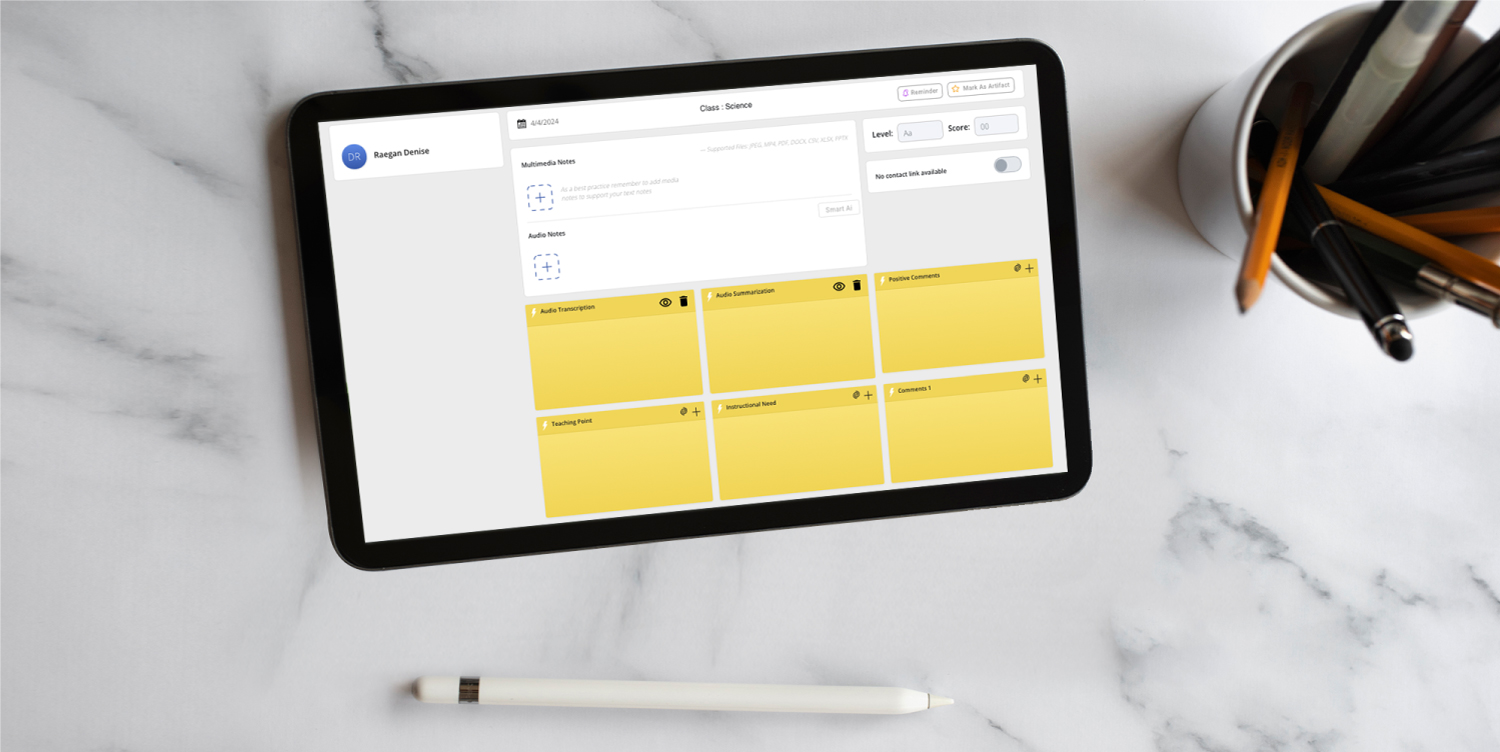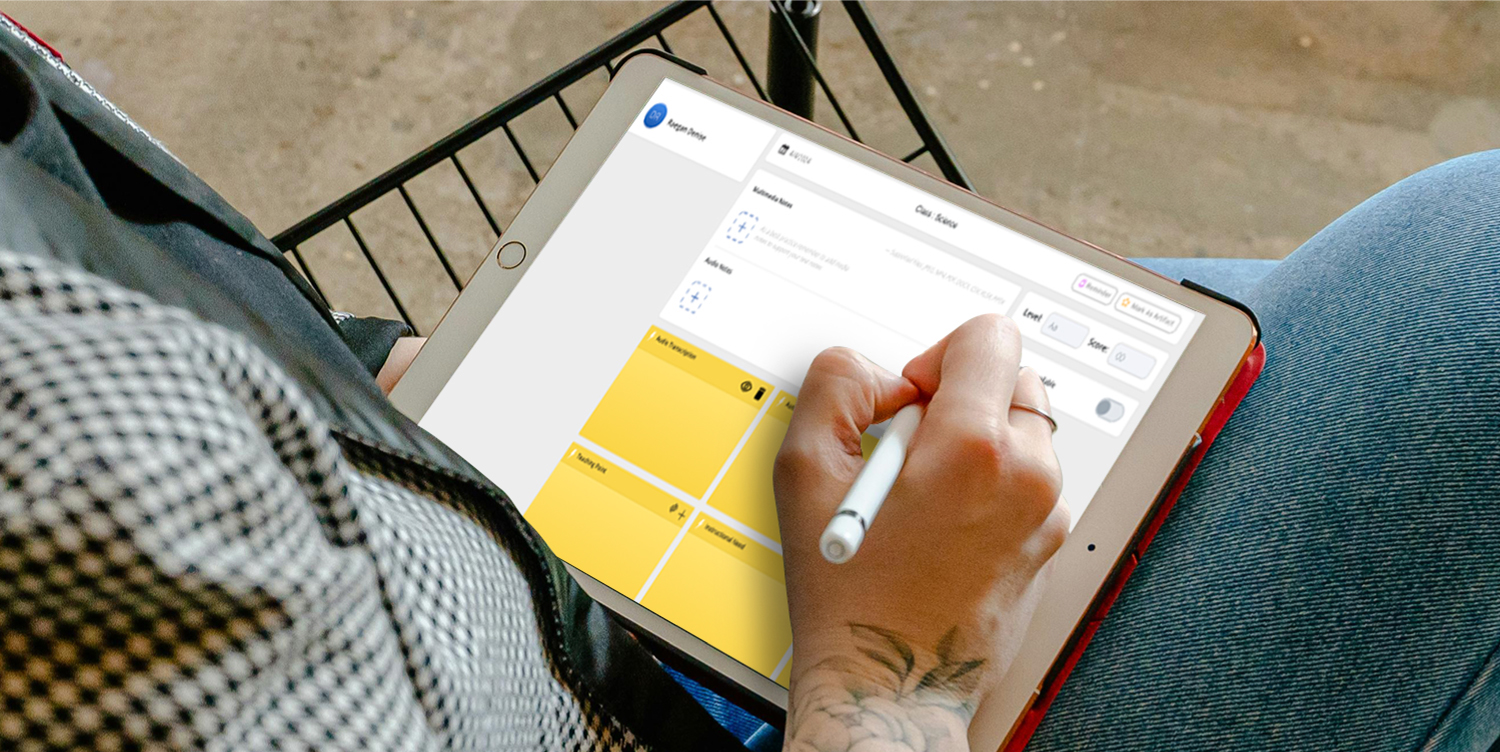Note-Taking Strategies Every Teacher Should Know
Note-taking is a fundamental practice that significantly impacts student learning outcomes. Just as a doctor meticulously writes a prescription tailored to each patient’s needs, teachers must employ effective note-taking strategies to cater to diverse learning styles and abilities. This blog delves into the importance of note-taking in education, explores historical perspectives, and provides insights into indispensable strategies that every teacher should incorporate into their pedagogical toolkit.
Teachers wield a unique tool that can significantly enhance student engagement and learning outcomes: note-taking. Teachers conferring notes on every student holds immense significance in the educational sphere. It allows educators to capture valuable insights into each student’s strengths, challenges, and learning preferences. Teacher notes enable tailored instruction that meets the diverse needs of learners.
Teachers create a comprehensive repository of information that informs their instructional strategies by meticulously recording observations, progress, and interactions. These notes serve as a roadmap for navigating the complexities of the classroom, guiding teachers in adapting their approach to accommodate individual learning gaps and foster meaningful learning experiences.
Moreover, teacher note-taking cultivates a sense of accountability and responsibility in the educational process. Just as a doctor relies on accurate record-keeping to track the effectiveness of treatments and monitor patient progress, teachers use their notes to assess student growth and development over time. This iterative process allows educators to identify areas of improvement, celebrate achievements, and intervene promptly when necessary.
Much like a doctor carefully crafts a prescription to administer the proper treatment, teachers diligently jot down notes on every student in the classroom to record vital information for recall and reinforcement. This practice goes beyond mere documentation; it serves as a cornerstone for personalized instruction, fostering a supportive learning environment where every student’s needs are acknowledged and addressed.
Beyond its practical implications, teacher note-taking also embodies a relational aspect that strengthens the teacher-student bond. When students know that their teachers are invested in understanding their unique needs and aspirations, it fosters a sense of trust and belonging within the classroom community. This, in turn, promotes a positive learning environment where students feel valued, supported, and empowered to take ownership of their learning journey.

The Importance of Note-Taking in Education:
Note-taking serves two primary functions: recording information and aiding reflection. Beyond simply creating a memory aid like a shopping list or a diary, the primary goal of note-taking is to establish an external memory repository that can be referenced later on. In various information-transmission scenarios, teachers strive to prevent forgetting crucial details. This practice is indispensable in academic settings, particularly at the university level, where professors and educators record information from lectures, textbooks, and other sources to successfully navigate the educational journey of their students.
Historical Perspectives on Note-Taking
Note-taking dates back centuries. Ancient scholars employed various techniques to record and disseminate knowledge. From the meticulous annotations of medieval manuscripts to the systematic categorization of Renaissance scholars, note-taking has evolved alongside advancements in communication technologies and pedagogical methods.
In the 20th century, educational theorists like Benjamin Bloom emphasized the importance of active teaching strategies, including note-taking, in promoting student engagement and achievement. Their seminal works laid the groundwork for contemporary approaches to teaching and learning, underscoring the transformative potential of student-centered practices.
The Doctor’s Prescription
Consider a scenario where a doctor provides medical care without documenting patient histories or treatment plans. Relying solely on memory, the doctor may overlook critical details, prescribe inappropriate medications, or fail to track the progression of illnesses. Similarly, with effective note-taking strategies, teachers may be able to address individual student needs, monitor progress, or adapt instruction to diverse learning styles.
Just as a doctor’s prescription serves as a personalized roadmap for recovery, comprehensive notes empower teachers to tailor instruction, scaffold learning experiences, and provide timely feedback. By documenting student responses, misconceptions, and growth areas, teachers gain valuable insights into individual progress and can adjust their teaching strategies accordingly.
Digital Note-Taking Tools
Integrate technology-enabled platforms such as digital notebooks, annotation software, or online discussion forums to support remote learning and enhance accessibility. Digital note-taking tools offer flexibility, customization options, and opportunities for multimedia integration, catering to diverse learning preferences and needs.
Digital note-taking tools offer many benefits for teachers when it comes to writing notes on every student. These tools revolutionize the traditional pen-and-paper method, providing educators with efficient and comprehensive means of recording, organizing, and accessing student information. Here’s how digital note-taking tools can assist teachers in this context and the purpose they serve:

Centralized Storage: Digital note-taking tools enable teachers to store all student-related information in one centralized location. Whether attendance records, academic performance data, behavioural observations, or individualized learning plans, teachers can access and update these notes effortlessly.
Customization: Digital note-taking tools offer flexibility in formatting and organization, allowing teachers to customize their notes to suit their preferences and the specific needs of each student. Teachers can tailor their notes for maximum clarity and efficiency by creating categories, tagging entries, or adding multimedia elements.
Accessibility: With digital note-taking tools, teachers can access student notes anytime, anywhere, using various devices such as computers, tablets, or smartphones. This accessibility ensures that important information is always available in the classroom, during meetings, or while planning lessons at home.
Efficiency: Digital note-taking streamlines writing, editing, and sharing notes, saving teachers valuable time and effort. Features such as templates, auto-fill options, and collaborative editing capabilities enhance efficiency, allowing teachers to focus more on engaging with students and less on administrative tasks.
Data Analysis: Digital note-taking tools often have analytical features that enable teachers to analyze student data and identify patterns or trends. By aggregating and visualizing information, teachers gain valuable insights into student performance, progress, and areas for growth, facilitating informed decision-making and targeted interventions.
Communication: Digital note-taking tools facilitate seamless communication between teachers, students, parents, and other stakeholders. Whether it’s sharing progress reports, scheduling meetings, or providing feedback, these tools are a communication hub that promotes collaboration and transparency.
In this context, the purpose of teacher note-taking with digital tools is multifaceted:
- Individualized Instruction: By maintaining detailed notes on every student, teachers can personalize instruction to meet each student’s unique needs, preferences, and learning styles. This targeted approach enhances student engagement, motivation, and academic achievement.
- Monitoring Progress: Teacher note-taking allows educators to track student progress over time, identifying areas of strength and areas requiring additional support. By tracking trends and patterns, teachers can adapt their teaching strategies, provide timely interventions, and celebrate student successes.
- Documentation And Accountability: Digital note-taking is a reliable record of student interactions, assessments, and achievements. It provides a transparent and accountable framework for documenting teacher observations, interventions, and decision-making processes.
- Parental Engagement: Digital note-taking facilitates communication with parents, enabling teachers to share updates, progress reports, and actionable insights. Teachers foster a collaborative partnership that supports student success inside and outside the classroom by involving parents in the educational process.
Digital note-taking tools offer a myriad of benefits to teachers in the process of writing notes on every student. These tools streamline the note-taking process, enhance organization, and provide valuable insights into student progress.
Note-Taking Strategies:
Here are several strategies and recommendations for utilizing digital note-taking tools effectively:
- Individual Student Profiles: Create digital profiles for each student using the note-taking tool. Include essential information such as academic performance, learning styles, behavioural patterns, and specific accommodations or interventions.
- Observation Templates: Develop customizable templates within the digital note-taking tool for capturing observations during classroom activities, discussions, and assessments. These templates can be tailored to align with specific learning objectives, allowing teachers to track student progress effectively.
- Real-Time Recording: Leverage digital note-taking tools to record observations in real-time during classroom instruction. It enables teachers to capture spontaneous insights and reflections as they interact with students, ensuring accuracy and timeliness in documentation.
- Multimedia Integration: Take advantage of multimedia features within digital note-taking tools to enhance the richness of observations. Incorporate audio recordings, images, and video clips to comprehensively document student behaviours, interactions, and achievements.
- Data Analysis And Reporting: Utilize the analytical capabilities of digital note-taking tools to identify patterns, trends, and areas for improvement across student populations. Generate reports and visualizations to communicate student progress effectively to stakeholders, such as parents, administrators, and support staff.
- Integration with Student Information Systems (SIS): Integrate digital note-taking tools with existing SIS platforms to streamline data management and ensure consistency in student records. This allows for seamless transfer of information between systems, minimizing duplication of effort and potential errors.
- Collaborative Note-Taking: Encourage collaboration among teachers and support staff by sharing digital notes and observations within the note-taking tool. Collaborative note-taking facilitates information sharing, interdisciplinary communication, and coordinated support for students with diverse needs.
- Regular Review and Reflection: Schedule dedicated time for reviewing and reflecting on digital notes accumulated over time. Use this opportunity to identify areas of progress, areas for growth, and adjustments needed in instructional practices or interventions.
- Professional Development and Training: Provide training and support to teachers on effectively utilizing digital note-taking tools in their practice. Offer resources, workshops, and peer learning opportunities to enhance proficiency and promote best practices.
- Privacy and Security Measures: Implement robust privacy andsecurity measures to safeguard sensitive student information stored within digital note-taking tools. Ensure compliance with relevant regulations, such as the Family Educational Rights and Privacy Act (FERPA), and establish data access and sharing protocols.
Digital note-taking tools offer teachers a powerful platform for capturing, organizing, and analyzing student data. By leveraging these tools effectively and implementing sound strategies, teachers can enhance their ability to write notes on every student, facilitate personalized instruction, and support student success.
Conclusion:
In conclusion, note-taking is a foundational practice that enhances student learning outcomes. By incorporating effective note-taking strategies into their instructional practices, teachers can empower students to actively engage with course materials, deepen their understanding, and achieve academic success. Just as a doctor’s prescription is tailored to each patient’s unique needs, comprehensive notes serve as personalized guides for learning, enabling teachers to address individual strengths, challenges, and learning preferences. As education continues to evolve in response to changing pedagogical trends and technological advancements, the timeless significance of note-taking remains steadfast, serving as a cornerstone of effective teaching and learning.
Teacher note-taking is not merely a bureaucratic task; it is a strategic practice that empowers educators to unlock the full potential of every student. Just as a doctor’s prescription serves as a lifeline for patients, teacher notes catalyze student success, guiding them towards academic achievement and personal growth. As educators continue to navigate the complexities of the modern classroom, the power of teacher note-taking remains invaluable for fostering student engagement, learning, and empowerment.
